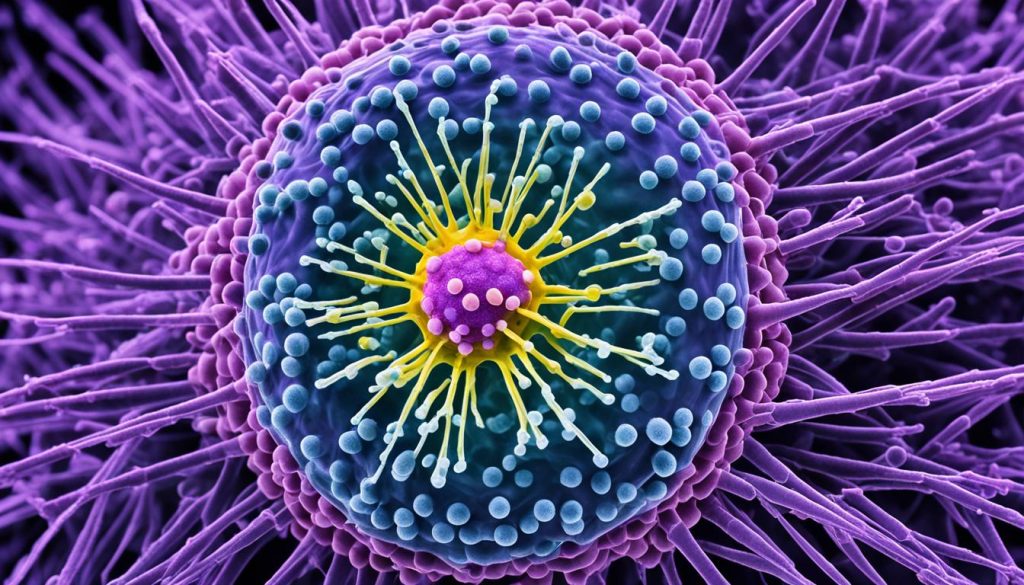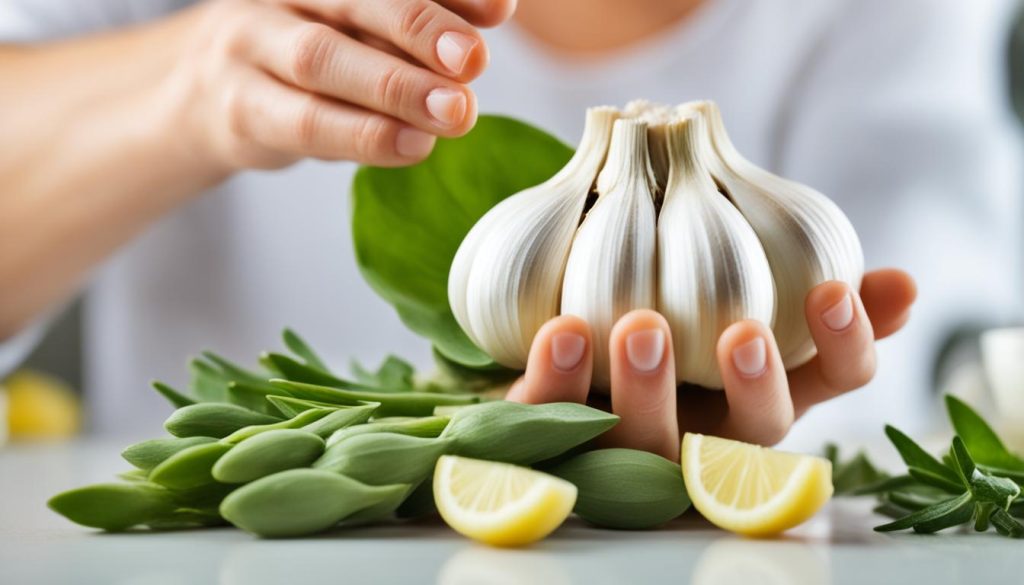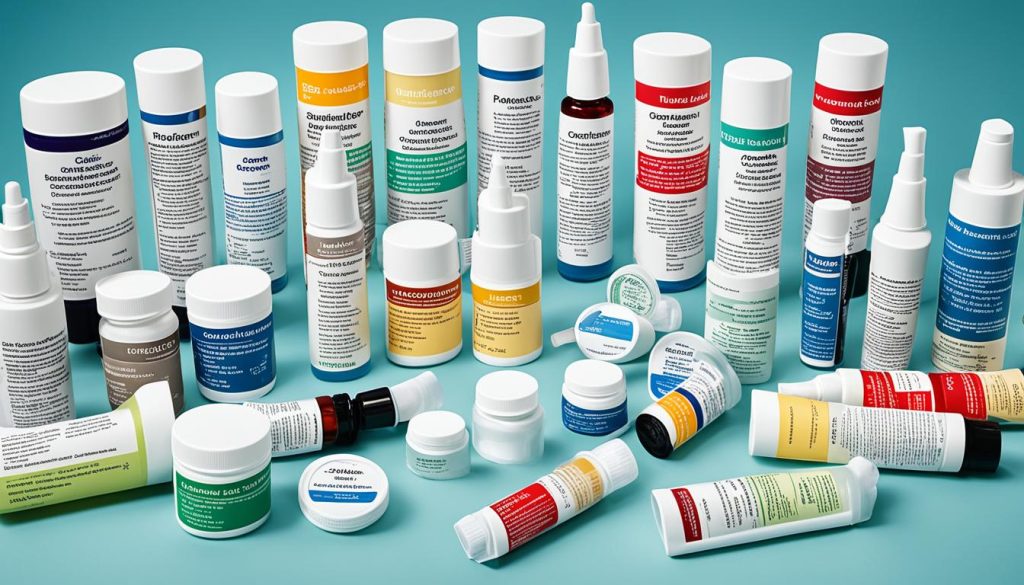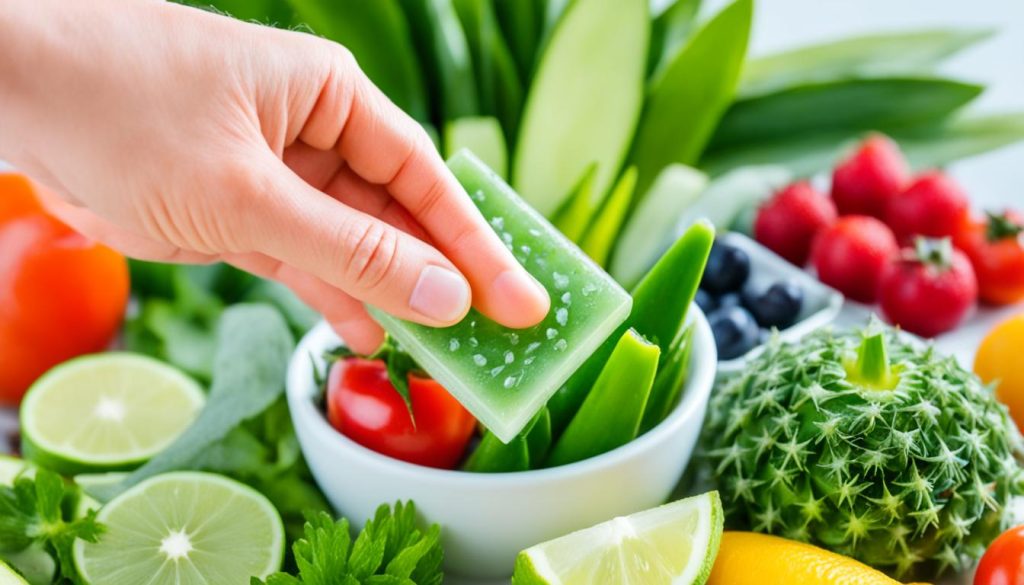Fever blisters, also known as cold sores, can be painful and inconvenient. If you’re looking for ways to get rid of a fever blister quickly, you’ve come to the right place. While there is no cure for cold sores, there are remedies and treatments that can help alleviate symptoms and promote faster healing.
Home remedies such as using a cold compress, applying petroleum jelly, and taking pain relievers can provide quick relief and help speed up the healing process. Over-the-counter topical creams and ointments containing lidocaine or benzocaine can help numb the area and promote faster healing. In some cases, prescription medications may be prescribed to speed up the healing process.
If you’re interested in learning more about fever blister remedies, fast fever blister treatment, and fever blister home remedies for quick relief, this article will provide you with the information you need. By following the tips and techniques mentioned here, you can increase the chances of getting rid of a fever blister within 24 hours. So, let’s get started!
In the next sections, we will explore the causes and contagiousness of fever blisters, as well as home remedies, topical creams, and prescription medications that can help with rapid fever blister treatment.
Causes and Contagiousness of Fever Blisters
Fever blisters, also known as cold sores, are caused by the herpes simplex virus (HSV-1). This virus is highly contagious and can spread through close contact, such as kissing or sharing personal items like cosmetics, lip balm, razors, toothbrushes, towels, utensils, and drinking glasses.
The virus is most contagious when a cold sore is present, especially when the blister starts to ooze. However, it’s important to note that the virus can still be spread even when there is no visible blister.
More than 50% of adults in the U.S. are infected with the type of herpes virus that most commonly causes cold sores, but not everyone develops symptoms.
How Do Fever Blisters Spread?
Fever blisters spread through direct contact with the fluid from the blister or by touching objects contaminated with the virus. The virus enters the body through a break in the skin and travels along nerve pathways to establish itself in the nerve cells near the site of infection.
Once the virus is in the body, it can remain dormant for weeks or even years. Certain triggers, such as stress, illness, or a weakened immune system, can lead to the reactivation of the virus and the development of fever blisters.
Contagious Period of Fever Blisters
The contagious period of fever blisters starts before the blister appears and continues until the blister is completely healed. During this time, it’s important to take precautions to prevent the spread of the virus to others.
Avoid close contact with others, especially when a blister is present or oozing. Wash your hands frequently, especially after touching the blister or applying any topical treatments. Avoid sharing personal items to minimize the risk of spreading the virus.
It’s important to remember that the herpes simplex virus can be spread even when there are no visible symptoms or blisters. This is known as asymptomatic shedding, where the virus is present on the skin surface without causing any noticeable symptoms.

Understanding the causes and contagiousness of fever blisters can help prevent the spread of the virus and minimize the frequency of outbreaks. Taking proper precautions and maintaining good hygiene can go a long way in protecting yourself and others from this common viral infection.
Home Remedies for Quick Fever Blister Relief
When it comes to getting rid of a fever blister quickly, there are several home remedies that can provide relief. Here are some effective natural remedies for fever blisters:
- Cold Compress: Applying a cold, damp washcloth or ice to the affected area can help reduce pain and swelling.
- Petroleum Jelly: Applying petroleum jelly to the blister can help soothe and moisturize the area, promoting faster healing.
- Pain Relievers: Over-the-counter pain relievers like ibuprofen and acetaminophen can help relieve pain and reduce inflammation associated with fever blisters.
- Lemon Balm: Lemon balm contains antiviral properties that can help combat the herpes simplex virus, which causes fever blisters. Applying lemon balm extract or ointment to the blister can help speed up healing.
- Propolis: Propolis, a substance produced by bees, has antiviral and antibacterial properties. Applying propolis extract or ointment to the blister can help suppress the virus and promote healing.
- Oregano Oil: Oregano oil has powerful antiviral properties. Dilute a few drops of oregano oil in a carrier oil, such as coconut oil, and apply it to the blister for quick relief.
Using these home remedies as soon as you feel a fever blister developing can increase the chances of healing within 24 hours. Remember, results may vary, and it is always best to consult with a healthcare professional for personalized advice.

Topical Creams and Ointments for Fast Fever Blister Treatment
When it comes to fast fever blister treatment, over-the-counter topical creams and ointments can be incredibly effective. These products are readily available at pharmacies and drugstores, providing convenient access to relief. Topical creams for fever blisters often contain ingredients like lidocaine, benzocaine, docosanol, or benzyl alcohol, which have proven benefits in controlling pain and promoting faster healing.
Lidocaine and benzocaine are both anesthetic agents that work to provide immediate pain relief when applied to the affected area. These ingredients numb the nerve endings, reducing discomfort and allowing the blister to heal more comfortably. Docosanol, on the other hand, is an antiviral medication that can help heal fever blister lesions within just a few days of use.
Applying a topical cream or ointment at the earliest sign of a fever blister is crucial. By doing so, you can maximize the treatment’s effectiveness and potentially reduce the blister’s healing time. Regular and generous application is key to ensuring the cream or ointment fully covers the affected area.
Here are some common ingredients found in topical creams and ointments for fast fever blister treatment:
| Ingredient | Benefits |
|---|---|
| Lidocaine | Provides immediate pain relief by numbing the area |
| Benzocaine | Anesthetic agent that helps alleviate pain |
| Docosanol | Antiviral medication that promotes healing within a few days |
| Benzyl Alcohol | Provides antiseptic properties to prevent infection |
It’s important to note that some topical creams and ointments may require more frequent application, so make sure to read the instructions and follow them accordingly.

Using over-the-counter topical creams and ointments for fast fever blister treatment can significantly reduce discomfort and accelerate the healing process. However, if your symptoms persist or worsen, it’s recommended to consult with a healthcare professional for further evaluation and guidance.
Prescription Medications for Rapid Fever Blister Removal
In addition to over-the-counter options, there are also prescription medications available to help with rapid fever blister removal. When it comes to treating fever blisters, antiviral drugs are commonly prescribed. These medications, including acyclovir, valacyclovir, famciclovir, and penciclovir, work by inhibiting the reproduction and spread of the herpes simplex virus, thus speeding up the healing process.
To increase the chances of healing within 24 hours, it’s crucial to start taking these prescription medications as soon as a fever blister develops. These antiviral drugs are effective in reducing the severity and duration of fever blisters when used early on.
If you experience frequent fever blister outbreaks or severe symptoms, it’s recommended to consult with a healthcare provider. They may consider prescribing antiviral medication for long-term management to help prevent outbreaks and minimize their impact on your daily life.
| Prescription Medication | Commonly Prescribed for | Dosage | Possible Side Effects |
|---|---|---|---|
| Acyclovir | Fever Blisters, Herpes Simplex Infections | 400 mg, three times a day for seven to ten days | Headache, nausea, diarrhea, dizziness |
| Valacyclovir | Fever Blisters, Herpes Simplex Infections | 2000 mg, twice a day for one day | Headache, nausea, abdominal pain, dizziness |
| Famciclovir | Fever Blisters, Herpes Simplex Infections | 1500 mg, as a single dose | Headache, nausea, diarrhea, dizziness |
| Penciclovir | Fever Blisters (Cream), Herpes Simplex Infections | Apply cream every 2 hours while awake for four days | Burning, stinging, itching at the application site |
It’s important to note that these medications may have possible side effects, so it’s essential to follow your healthcare provider’s instructions and discuss any concerns or potential interactions with other medications you may be taking.
With the right prescription medication and early intervention, you can significantly reduce the duration and severity of fever blisters, ultimately promoting quicker healing and providing much-needed relief.
Prevention and Management of Fever Blisters
While it may not be possible to completely prevent fever blisters, there are several measures you can take to reduce the frequency of outbreaks and manage the symptoms. Here are some helpful tips:
Avoiding Triggers
- Avoid situations that can trigger fever blisters, such as fever, illness, menstruation, stress, sunlight, and a weakened immune system.
- Take steps to minimize stress levels through meditation, deep breathing exercises, or other relaxation techniques.
It’s important to maintain good hygiene to prevent the spread of the herpes simplex virus, which causes fever blisters. Avoid sharing personal items like lip balm, razors, toothbrushes, towels, utensils, and drinking glasses.
Protecting your lips from the sun can also help reduce the likelihood of a fever blister outbreak. Be sure to apply sunscreen or lip balm with SPF when spending time in the sun.
Lysine Supplements and Creams
Lysine is an amino acid that may help prevent fever blister outbreaks and speed up healing. Consider taking lysine supplements or using topical lysine creams to support your body’s defense against the herpes simplex virus.

By implementing these preventive measures and effectively managing stress levels, you can significantly reduce the occurrence of fever blister outbreaks and better manage the symptoms associated with them.
If you experience frequent or severe fever blister outbreaks, it’s recommended to consult with a healthcare provider for further evaluation and management options tailored to your individual needs.
Conclusion
Fever blisters, also known as cold sores, can be a bothersome issue causing pain and discomfort. While there is no known cure for cold sores, there are several remedies and treatments available to help manage symptoms and promote faster healing.
Home remedies such as applying cold compresses, using petroleum jelly, and taking over-the-counter pain relievers can provide quick relief. Additionally, topical creams and ointments can help control pain and expedite the healing process. In more severe cases, prescription medications like antiviral drugs can be prescribed to aid in the rapid removal of fever blisters.
Prevention is key to reducing the frequency of outbreaks. Managing stress, avoiding triggers such as sunlight and sickness, and practicing good hygiene are effective preventive measures. However, if you experience frequent or severe fever blister outbreaks, it is recommended to seek personalized treatment options from a healthcare provider.
With proper care and timely interventions, it is possible to achieve quick relief from fever blisters and promote healing within 24 hours. Remember to consult with a healthcare professional for appropriate guidance and support in managing this common condition.




